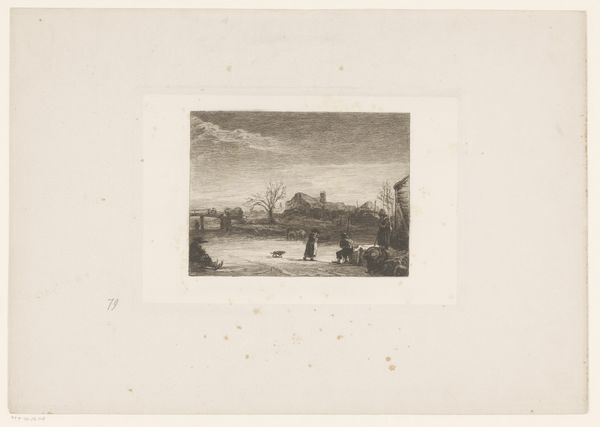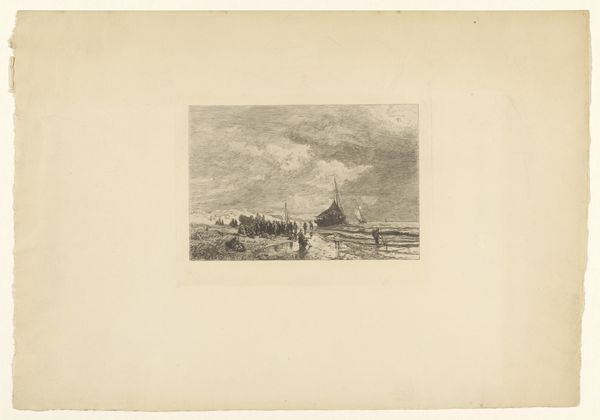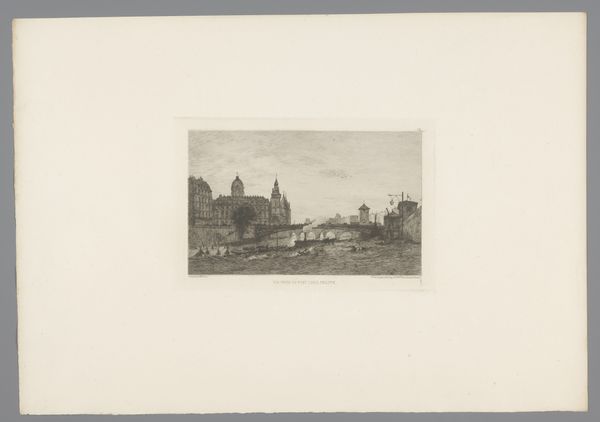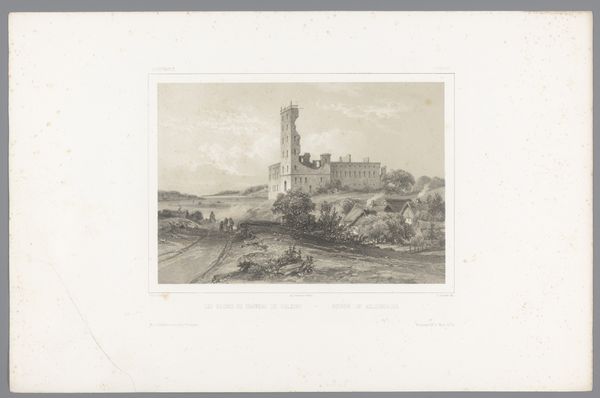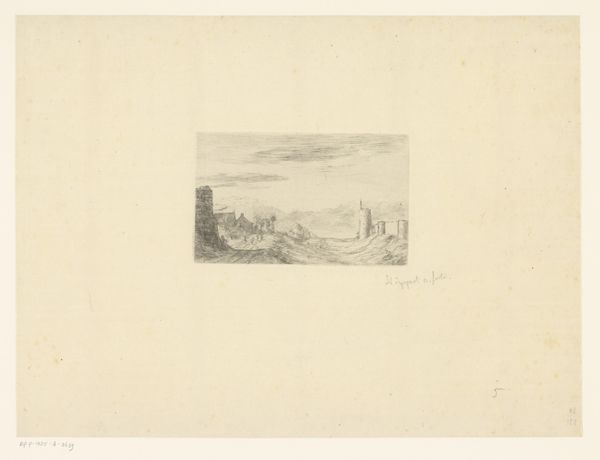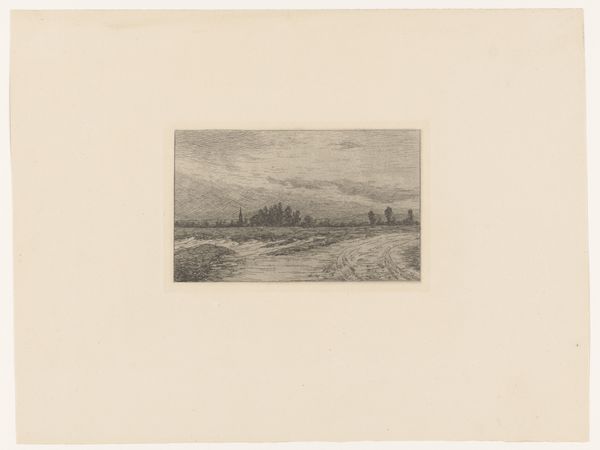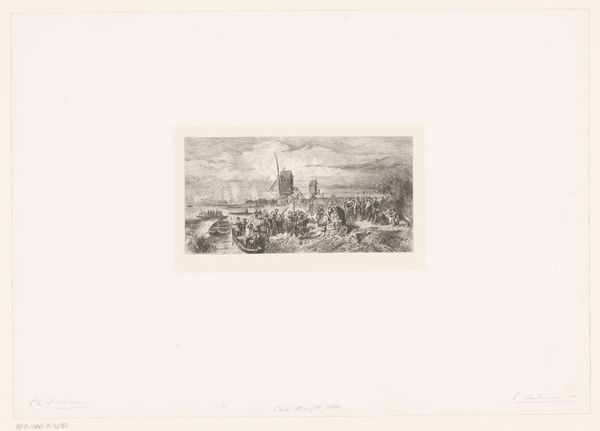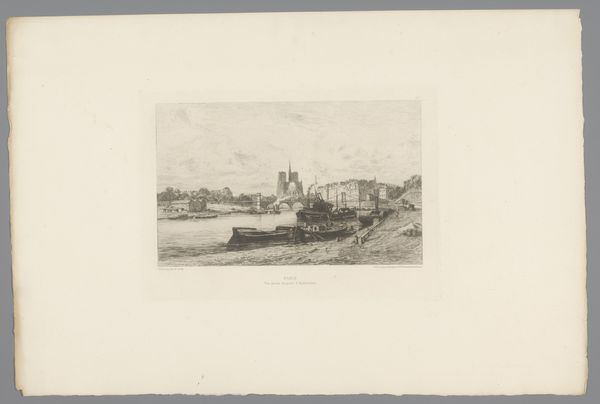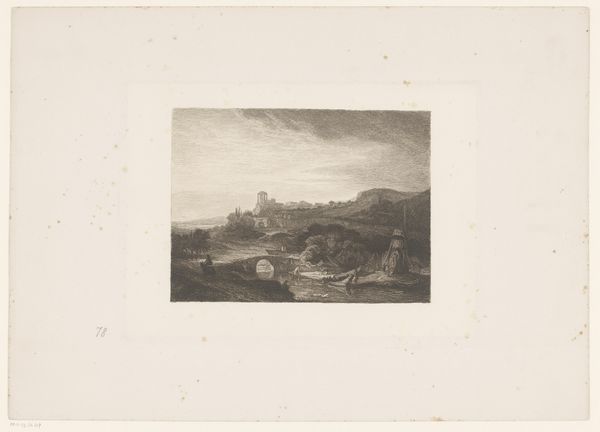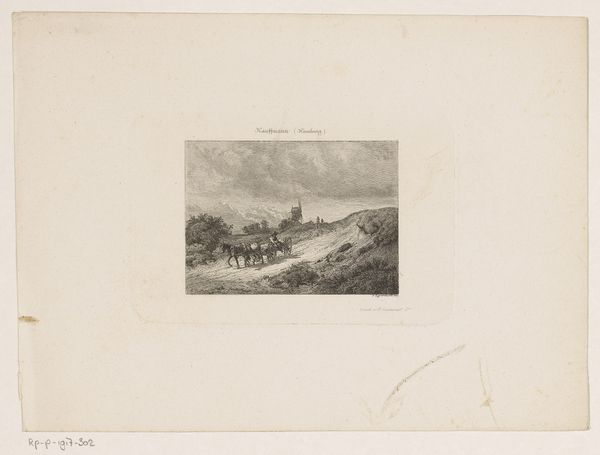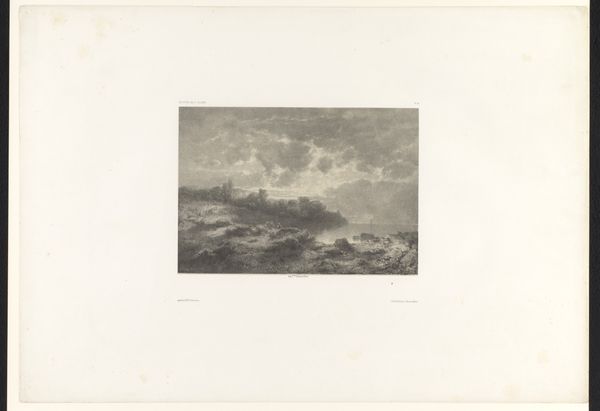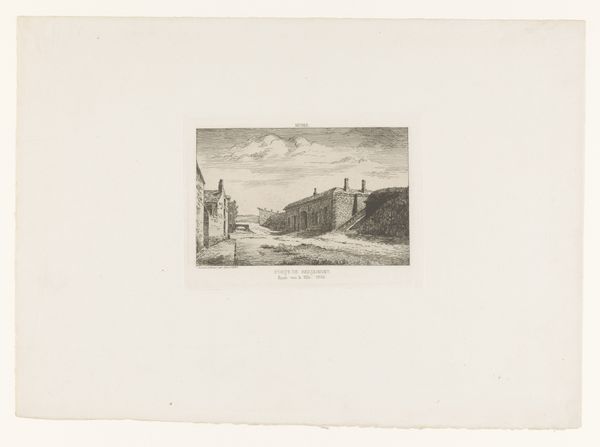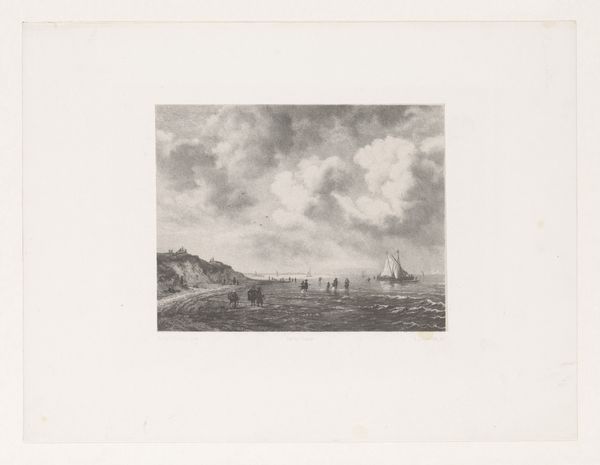
print, etching
#
dutch-golden-age
# print
#
etching
#
landscape
Dimensions: height 269 mm, width 356 mm
Copyright: Rijks Museum: Open Domain
Editor: Here we have Adolf Carel Nunnink’s “Gezicht op Katwijk aan Zee,” an etching from between 1823 and 1863, on display at the Rijksmuseum. It has this lovely, almost melancholic atmosphere. I’m really drawn to how he’s rendered the landscape. What do you make of it? Curator: Consider the material production. Etching, as a printmaking process, democratized images. Who would have had access to such a view of Katwijk aan Zee, and how does this availability reshape the social context of landscape art? Editor: That's a really interesting point. I guess it made art more accessible beyond the elite, and brought art closer to common people’s experiences of work, landscape and home. It isn't a pristine or heroic landscape though... I wonder why. Curator: Precisely. Notice the labour implied, from the initial production of the etching plate to the final print. How might the tools used—the acids, the press—inform our understanding of the finished piece and what choices were made? How does the medium emphasize or de-emphasize other contextual clues? Editor: So, by understanding the "how" of its making, we gain insight into its meaning? Curator: In part, yes. The etching process itself, with its reliance on industrial materials and replicability, inherently speaks to a changing social landscape and methods of pictorial rendering and reception. Consider what this relatively inexpensive etching may have been *for*, who it served, how it circulated. What sort of culture produced or consumed such prints? Editor: I see, understanding the context of its creation – the materials and means of production – helps unveil so much about its social and historical relevance. Thanks, that gives me a totally different appreciation of the print. Curator: And perhaps also consider our *own* contemporary consumption, as we analyze it for an audio tour. This also changes and reproduces meaning.
Comments
No comments
Be the first to comment and join the conversation on the ultimate creative platform.
